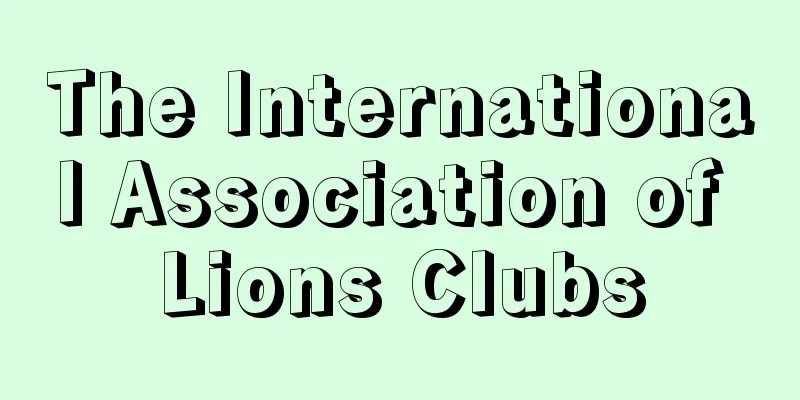Oparin - Oparin (English notation) Александр Иванович Опарин/Aleksandr Ivanovich Oparin

|
Soviet biochemist and researcher of the origin of life. Born in Uglich, Russia, as the son of a merchant. He majored in plant biochemistry at Moscow University and graduated in 1917. During his time at university, he was influenced by the botanist and evolutionist Kliment Arkadievich Timiryazev (1843-1920). During World War I, he worked as a chemical engineer in the confectionery industry, and during the Russian Revolution of 1917, he participated in the union movement of chemical industry workers and in the construction of the chemical industry after the revolution. In the same year, when biochemist Aleksey Nikolaevich Bah (1857-1946), who had been in exile in Geneva, Switzerland due to the Narodnik movement, returned to Russia, he studied under him and studied plant respiration and enzymes. He also became interested in the origin of life, and proposed the first scientific theory of the emergence of life, which he presented at an academic conference in 1922. He published a pamphlet about his theory in 1924 and a book entitled "The Origin of Life" in 1936. [Makoto Ishimoto] Origin of lifeOparin criticized the conventional theory of the origin of life from a scientific standpoint, and outlined the path from the early state of the Earth to the emergence of life and the evolution of organisms into their current forms. In other words, he pointed out the possibility that simple organic matter was formed in a reducing state in the early stages of the formation of the Earth, and then complex organic matter, amino acids, sugars, etc. that make up organisms were formed. He also proposed the theory that multi-molecular colloidal particles and coacervates were formed through the formation and binding of organic polymers, and that those particles that were advantageous for survival, growth, and proliferation were left behind as they changed to adapt to their environment, and that through evolution and selection, they evolved into organisms. He proposed that primitive organisms were anaerobic organisms that utilized organic matter (heterotrophs), and that photosynthetic organisms (autotrophs) and aerobic organisms arose in the process of evolution to adapt to changes in the Earth's environment. "The Origin of Life" was translated into many languages around the world and was basically widely accepted, promoting scientific research into the origin and evolution of life. [Makoto Ishimoto] performanceOparin also worked hard to research the scientific foundations of food processing and fermentation in the Soviet Union and to solve problems associated with large-scale industrialization, becoming the founder of industrial biochemistry in the Soviet Union. In 1931, he worked hard to establish the Bach Institute of Biochemistry, and later became its director in 1946. He was a member of the Academy of Natural Sciences of the USSR (now the Russian Academy of Sciences) (1946) and a professor at Moscow University (1942-1960). He also served as president of the Biochemical Society of the USSR (1959) and vice-president of the International Union of Biochemistry (1962-1966), as well as a member of the World Peace Council (1950) and vice-chairman of the World Federation of Scientists (1952), and was active in the community. He visited Japan four times, in 1955, 1957, 1967, and 1977, and played a major role in academic exchange between Japan and the Soviet Union. [Makoto Ishimoto] "Matter, Life, Reason" by Oparin, translated by Ishimoto Makoto (1979, Iwanami Gendai Sensho)" ▽ "Challenge to the Origin of Life" by Oparin et al. (Kodansha Bluebacks) [Reference] | |Source: Shogakukan Encyclopedia Nipponica About Encyclopedia Nipponica Information | Legend |
|
ソ連の生化学者。生命の起源の研究家。ロシアのウグリッチに商人の子として生まれる。モスクワ大学で植物生化学を専攻し、1917年に卒業。在学中、植物学者であり進化論学者であるティミリャーゼフKliment Arkadievich Timiryazev(1843―1920)の影響を受けた。第一次世界大戦中は製菓工業の化学技師として働き、1917年のロシア革命においては化学工業労働者の組合運動に参加、革命後の化学工業建設にも参加した。同年、ナロードニキ運動でスイスのジュネーブに亡命していた生化学者バッハAleksey Nikolaevich Bah(1857―1946)が帰国すると、彼に師事し、植物の呼吸や酵素を研究。また、生命の起源に関心を抱き、初めて科学的な生命発生の説をたて、1922年に学会で発表。その説について1924年に小冊子を、さらに1936年に単行本として『生命の起源』を著した。 [石本 眞] 生命の起源オパーリンは、従来の生命発生の説を科学的立場から批判し、地球の初期状態から生命の発生、現在の形態の生物への進化に至るまでの道筋の大要を示した。すなわち、地球生成初期は還元状態で、簡単な有機物が生成し、それから生物を構成する複雑な有機物、アミノ酸、糖などが生成した可能性を指摘した。さらに有機高分子の生成、結合によって、多分子系のコロイド粒子、コアセルベートができ、その個々の粒子の環境に適合する変化によって存続・成長・増殖に有利なものが残され、進化と淘汰(とうた)を経て生物に至ったという説を提案した。原始生物は嫌気性の有機物利用生物(従属栄養生物)で、地球環境の変化に適合する進化の過程で光合成生物(独立栄養生物)や好気性生物が生じたとした。『生命の起源』は世界各国語に訳され、基本的に広く受け入れられ、生命の起源および進化の科学的研究を促した。 [石本 眞] 業績オパーリンはまた、ソ連における食品加工、発酵工業などの科学的基礎の研究や大工業化に伴う問題の解決に努力し、ソ連の工業生化学の創始者となった。1931年、バッハ記念生化学研究所設立に努力し、その後1946年に同研究所所長。ソ連自然科学アカデミー(現、ロシア科学アカデミー)会員(1946)、モスクワ大学教授(1942~1960)を務める。さらにソ連生化学会会長(1959)、国際生化学連合副会長(1962~1966)を務めるとともに、世界平和評議会委員(1950)、世界科学者連盟副委員長(1952)などを務め、社会活動を行った。1955(昭和30)、1957、1967、1977年の4回にわたって日本を訪問し、日ソの学術交流に果たした役割は大きい。 [石本 眞] 『オパーリン著、石本眞訳『物質▼生命▼理性』(1979・岩波現代選書)』▽『オパーリン他著『生命の起原への挑戦』(講談社・ブルーバックス)』 [参照項目] | |出典 小学館 日本大百科全書(ニッポニカ)日本大百科全書(ニッポニカ)について 情報 | 凡例 |
<<: Opal - opal (English spelling)
>>: Oharida Shrine - Oharida no Miya
Recommend
Food - Eat
〘Ta-ba-1〙 Ta/Bu 〘Ta-ba-2〙 (A humble form of the yo...
Liquefaction - Ekika (English spelling) liquefaction
This refers to the condensation of a gas into a l...
Crested Bowerbird - Crested Bowerbird
…Similar breeding behavior is also known in the S...
Dipodidae
…A general term for mammals of the Dipodidae fami...
Shiogama
A type of dried confectionery. It is made by addin...
Thin plate - Usuita (English spelling) sheet
A term for thick plates. In the case of steel pla...
Rainbow gnome (English name) Elagatis bipinnulatus
A marine fish of the family Carangidae in the orde...
Heavy Expulsion - Jutsuihou
One of the punishments in the Edo period. The most...
Dry spring water - Karasen-sui
〘 noun 〙 A pond that is made recognizable as such ...
Southern Baptist Convention
…In the 17th century, as the frontier moved westw...
Edo Castle Surrender
Edo Castle was handed over to the new government ...
Antithrombin III
…Activated coagulation factors, especially comple...
Old City Museum
…The second largest city in Denmark, and the capi...
Arts - Gay
[sound] gay (Wu) (Han) [Kanji to study] Year 4 1. ...
cataclysmic variable
…A star that changes brightness suddenly and dram...









